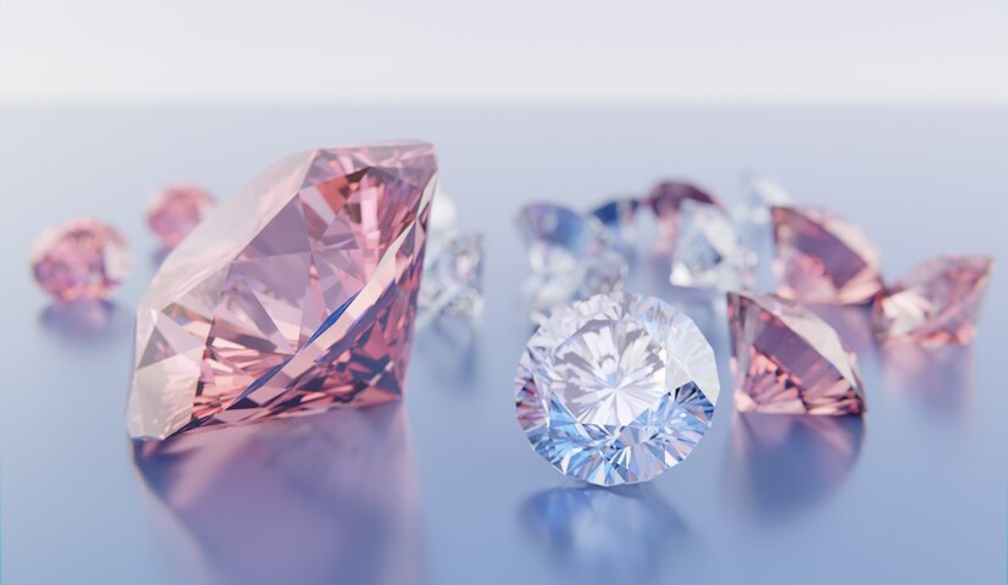The Environmental Footprint Paradox: How Lab Grown Diamonds Are Reshaping Sustainable Luxury in 2025

In an era where environmental consciousness meets luxury aspirations, the diamond industry stands at a pivotal crossroads. The emergence of lab-grown diamonds has not only disrupted traditional market dynamics but has fundamentally transformed our understanding of sustainable luxury. As we delve into 2025, this transformation has reached a critical turning point, with laboratory-created diamonds reshaping both consumer preferences and industry standards.
The journey of lab-grown diamonds from scientific novelty to luxury market disruptor reflects a broader shift in consumer values. While many wonder "are lab grown diamonds real diamonds," the answer lies in their identical chemical, physical, and optical properties to mined diamonds. These sophisticated gems, created through advanced technological processes, represent a perfect fusion of innovation and environmental responsibility, offering consumers a choice that aligns with both their aesthetic desires and ethical values.
The environmental impact of traditional diamond mining has long been a concern for environmentally conscious consumers. Recent studies indicate that mining one carat of diamonds disturbs approximately 100 square feet of land and moves 250 tons of earth. In contrast, lab-grown diamonds reduce carbon emissions by up to 85% compared to their mined counterparts, with some facilities achieving carbon neutrality through renewable energy sources. This stark difference in environmental footprint has become increasingly significant as climate change concerns intensify.
Leading manufacturers in this sustainable revolution have pioneered advanced growing techniques that further minimize environmental impact while maintaining exceptional quality. State-of-the-art facilities in the United States utilize 100% renewable energy, setting new industry standards for sustainable luxury production. Through sophisticated Chemical Vapor Deposition (CVD) technology, modern laboratories create diamonds that are not only environmentally superior but also possess remarkable clarity and brilliance.
The market response to lab-grown diamonds has been nothing short of revolutionary. Industry analysts report that the lab-grown diamond sector has experienced a compound annual growth rate of 15% since 2020, with market penetration accelerating significantly in 2024-2025. This growth reflects not just environmental concerns but also changing perceptions of luxury among younger consumers, particularly Millennials and Gen Z, who prioritize sustainability in their purchasing decisions.
Price accessibility has played a crucial role in this transformation. Lab-grown diamonds typically cost 40-50% less than their mined counterparts, making luxury more accessible without compromising quality or ethical standards. This price advantage, combined with environmental benefits, has created a compelling value proposition that resonates strongly with modern consumers.
The quality assurance processes for lab-grown diamonds have evolved significantly, with certification standards matching or exceeding those of natural diamonds. Advanced laboratories implement rigorous testing and certification protocols, ensuring that consumers receive gems that meet the highest standards of quality while maintaining complete transparency about their origin.
The future of sustainable luxury appears increasingly tied to technological innovation. As production techniques continue to advance, the environmental footprint of lab-grown diamonds is expected to decrease further. Industry experts predict that by 2026, lab-grown diamonds could account for up to 30% of the global diamond market, driven by increasing environmental awareness and technological improvements.
The impact extends beyond environmental considerations. Lab-grown diamonds have created new opportunities in the jewelry industry, enabling designers to experiment with larger stones and more intricate designs while maintaining affordability. This has democratized luxury while promoting sustainable practices, creating a new paradigm in the jewelry market.
Critics initially questioned whether lab-grown diamonds could truly capture the romance and allure of natural diamonds. However, the market has spoken clearly: consumers increasingly view these sustainable gems as not just alternatives but as superior choices that align with their values and aspirations. The story of each lab-grown diamond - one of human innovation and environmental responsibility - resonates deeply with modern luxury consumers.
As we progress through 2025, the role of lab-grown diamonds in reshaping sustainable luxury becomes increasingly clear. They represent not just a product category but a movement toward more conscious consumption in the luxury sector. The continued commitment to sustainable practices and technological innovation in the industry drives this transformation, proving that luxury and environmental responsibility can coexist beautifully.



